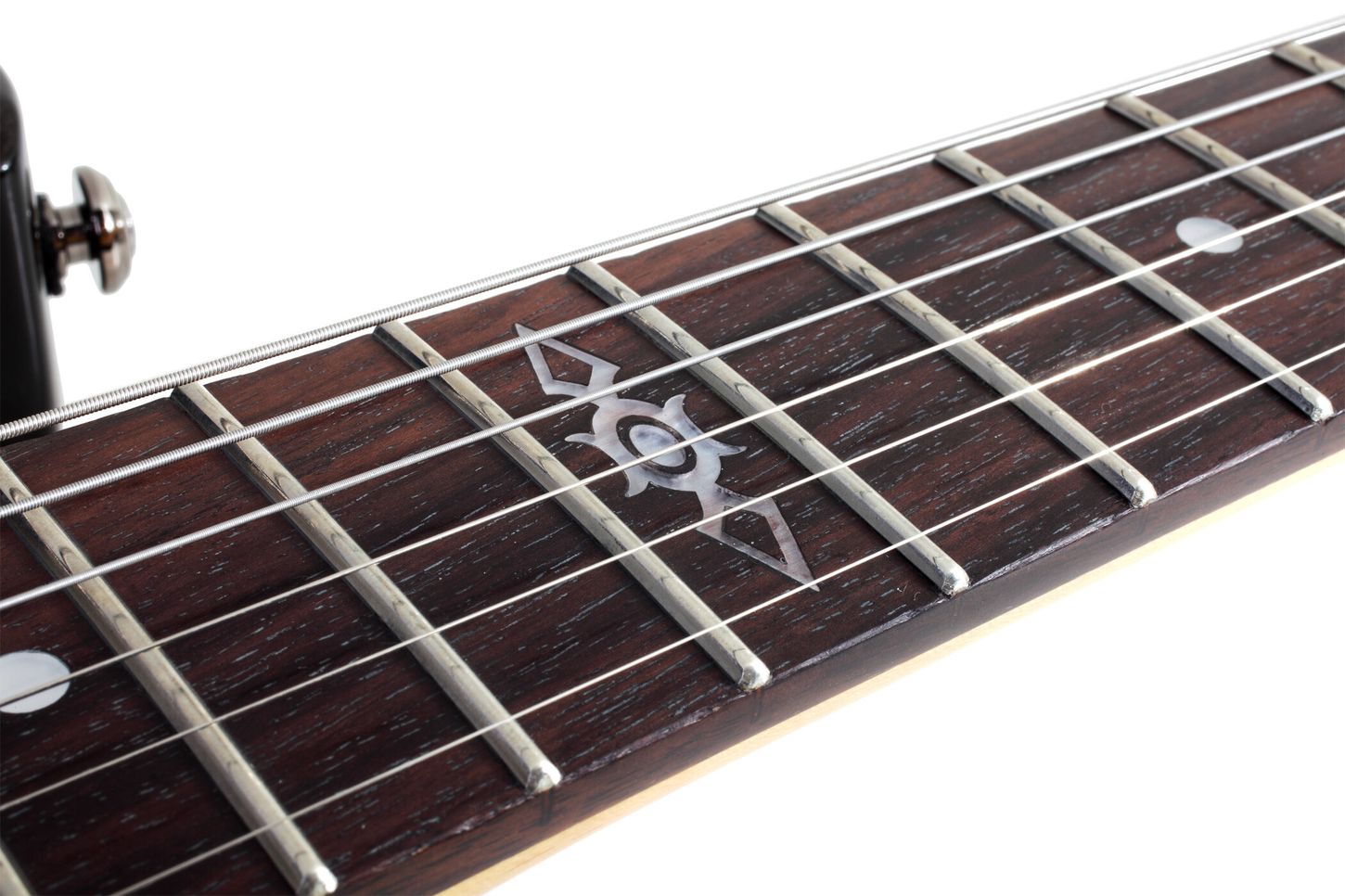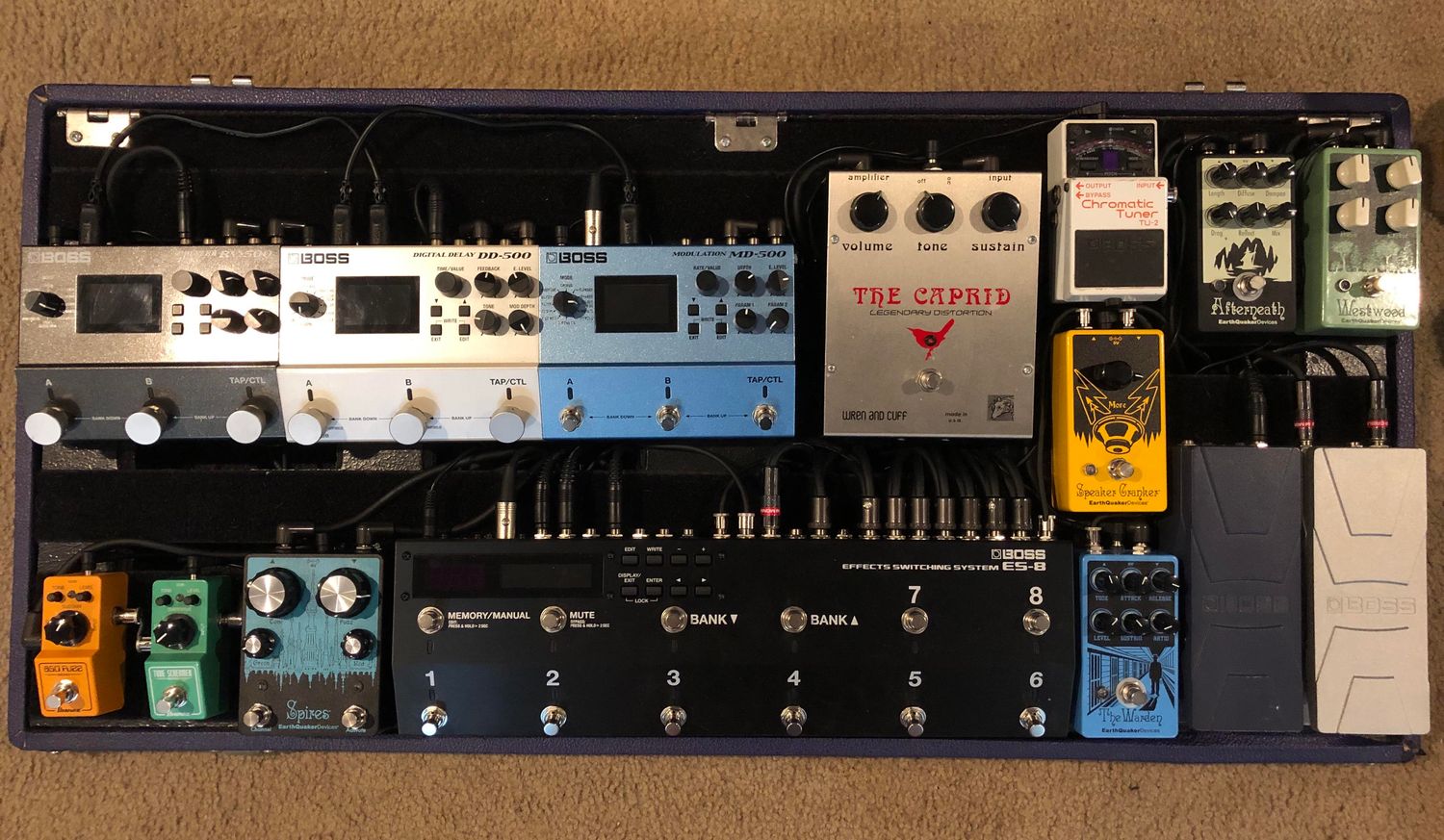Home>Production & Technology>Acoustic>How Many Frets Does An Acoustic Guitar Have


Acoustic
How Many Frets Does An Acoustic Guitar Have
Published: March 13, 2024
Discover the number of frets on an acoustic guitar and learn how it impacts your playing. Find out everything you need to know about acoustic guitar frets.
(Many of the links in this article redirect to a specific reviewed product. Your purchase of these products through affiliate links helps to generate commission for AudioLover.com, at no extra cost. Learn more)
Table of Contents
Introduction
When it comes to acoustic guitars, one of the fundamental components that significantly influences the instrument's playability and tonal range is the number of frets. Frets are the metal strips embedded along the fingerboard of the guitar, serving as the points where the strings are pressed to produce different notes. Understanding the significance of fret count is crucial for both seasoned guitarists and those venturing into the world of acoustic music.
The number of frets on an acoustic guitar is a defining characteristic that directly impacts the instrument's versatility and sonic capabilities. Whether you're strumming chords, picking melodies, or exploring complex fingerstyle techniques, the fret count plays a pivotal role in shaping your musical expression. In this article, we'll delve into the intricacies of fret count on acoustic guitars, exploring the standard number of frets, variations in fret count, and the implications for playability and sound. By the end of this journey, you'll have a deeper appreciation for the role of frets in shaping the acoustic guitar experience.
Standard Number of Frets
Traditionally, the standard number of frets on an acoustic guitar is 20. This configuration provides a wide tonal range and accommodates a diverse array of musical styles. With 20 frets, guitarists can effortlessly navigate through intricate chord progressions, unleash captivating solos, and explore the upper registers with ease. The 20-fret design strikes a harmonious balance between accessibility and sonic versatility, making it a popular choice among musicians across genres.
The layout of 20 frets allows players to access three complete octaves, empowering them to craft melodies that soar across the musical spectrum. From the resonant lows to the shimmering highs, the 20-fret acoustic guitar offers a rich tapestry of tonal possibilities, enabling musicians to articulate their musical visions with precision and emotion.
Moreover, the 20-fret configuration is conducive to advanced playing techniques such as tapping, harmonics, and intricate scale patterns. This expanded range empowers guitarists to push the boundaries of their creativity, fostering a dynamic and expressive playing experience.
While the 20-fret standard is prevalent in the acoustic guitar realm, it's important to note that variations exist, catering to different musical preferences and playing styles. Some acoustic guitars feature 21 or 22 frets, providing an extended upper range that appeals to players seeking additional notes for their compositions and improvisations. On the other hand, certain models may incorporate 19 frets, offering a more traditional tonal palette that resonates with vintage enthusiasts and purveyors of classic acoustic sounds.
In essence, the standard number of frets on an acoustic guitar serves as a cornerstone of its sonic identity, shaping the instrument's tonal character and playability. Whether it's the classic 20-fret configuration or alternative variations, each fret count contributes to the unique voice of the acoustic guitar, inviting musicians to embark on a melodic journey that transcends boundaries and resonates with the soul.
Variations in Fret Count
In the realm of acoustic guitars, the concept of fret count extends beyond the traditional 20-fret configuration, encompassing a spectrum of variations that cater to diverse musical preferences and playing techniques. These variations in fret count not only offer expanded tonal possibilities but also reflect the nuanced artistry and sonic exploration embraced by guitarists worldwide.
Extended Range: 21 and 22 Frets
Some acoustic guitars feature an extended fretboard with 21 or 22 frets, providing an augmented upper range that resonates with players seeking additional notes for their compositions and improvisations. This expanded fret count empowers guitarists to venture into higher registers, unlocking new melodic avenues and enriching their musical expressions. Whether it's crafting ethereal harmonies, unleashing captivating solos, or navigating complex chord voicings, the 21 or 22-fret acoustic guitar amplifies the instrument's sonic palette, inviting players to embark on a boundless musical odyssey.
Vintage Appeal: 19 Frets
In contrast to the extended range offered by 21 or 22 frets, certain acoustic guitar models embrace a more traditional approach with 19 frets. This configuration harkens back to the classic tonal palette favored by vintage enthusiasts and purveyors of timeless acoustic sounds. The 19-fret acoustic guitar exudes a nostalgic charm, evoking the essence of bygone eras while inviting musicians to channel the emotive resonance of traditional folk, blues, and roots music. With its distinct tonal character and understated elegance, the 19-fret acoustic guitar pays homage to the rich heritage of acoustic music, capturing the essence of authenticity and raw emotional storytelling.
Customized Fret Counts
Beyond the established standards of fret count, custom luthiers and guitar manufacturers often offer bespoke options, allowing musicians to personalize their instruments according to their artistic vision and playing style. This bespoke approach may encompass unique fret count configurations tailored to the specific sonic requirements and ergonomic preferences of individual players. Whether it's a customized 20+ fret design for avant-garde sonic explorations or a vintage-inspired 19-fret layout infused with modern innovations, the realm of customized fret counts reflects the spirit of artistic individuality and musical innovation, empowering guitarists to forge instruments that resonate with their creative ethos.
In essence, the variations in fret count on acoustic guitars embody a tapestry of sonic diversity and artistic exploration, offering players a spectrum of options to shape their musical narratives. Whether it's the allure of extended range, the timeless charm of vintage configurations, or the realm of customized fret counts, each variation encapsulates the spirit of musical evolution and personal expression, enriching the acoustic guitar landscape with boundless creativity and sonic allure.
Impact on Playability and Sound
The number of frets on an acoustic guitar profoundly influences both the instrument's playability and its sonic characteristics. Understanding the impact of fret count is essential for guitarists seeking to hone their craft and articulate their musical vision with precision and expression.
Playability
The fret count directly affects the playability of an acoustic guitar, shaping the accessibility of different notes and chord voicings across the fretboard. A higher number of frets, such as the 21 or 22-fret configurations, expands the upper range of the instrument, enabling players to access additional notes and harmonies. This extended range empowers guitarists to explore intricate melodies and complex chord voicings, fostering a dynamic playing experience that transcends conventional boundaries.
Conversely, acoustic guitars with a lower fret count, such as the 19-fret models, evoke a more traditional playing feel, resonating with musicians who appreciate the vintage charm and intimate tonal nuances associated with classic acoustic music. The 19-fret configuration encourages a focused approach to playing, inviting guitarists to delve into the emotive resonance of folk, blues, and roots music while embracing the inherent limitations as a catalyst for creative expression.
The standard 20-fret design strikes a harmonious balance between accessibility and sonic versatility, offering a comfortable playing experience that caters to a wide range of musical styles. This balanced layout facilitates fluid navigation across the fretboard, empowering guitarists to seamlessly transition between chords, scales, and melodic phrases with ease and precision.
Sound
In addition to playability, the fret count significantly shapes the sonic characteristics of an acoustic guitar. The extended range provided by 21 or 22 frets imbues the instrument with a brighter and more expansive tonal palette, allowing for the exploration of shimmering highs and nuanced harmonic textures. This extended upper range opens new sonic frontiers, enabling guitarists to craft ethereal melodies and intricate harmonies that resonate with clarity and brilliance.
On the other hand, acoustic guitars with a lower fret count, such as the 19-fret models, evoke a warmer and more intimate sonic profile, capturing the essence of vintage acoustic timbres and evoking a sense of nostalgia. The tonal nuances of the 19-fret configuration infuse the music with a raw, emotive quality, inviting players to channel the soulful resonance of traditional acoustic genres while embracing the inherent limitations as a catalyst for creative expression.
The standard 20-fret acoustic guitar strikes a versatile sonic balance, offering a rich tonal spectrum that encompasses resonant lows, vibrant mids, and shimmering highs. This balanced sonic profile caters to a diverse array of musical genres, empowering guitarists to articulate their musical narratives with depth and expression.
In essence, the fret count on an acoustic guitar serves as a pivotal factor in shaping both the instrument's playability and its sonic identity. Whether it's the extended range of 21 or 22 frets, the vintage allure of 19 frets, or the balanced versatility of the standard 20-fret configuration, each fret count imbues the acoustic guitar with a distinct playing experience and sonic allure, inviting musicians to embark on a melodic journey that resonates with creativity and emotion.
Conclusion
In the realm of acoustic guitars, the number of frets serves as a defining element that intricately shapes the instrument's playability, sonic characteristics, and expressive potential. From the traditional 20-fret standard to the diverse variations encompassing 19, 21, and 22 fret configurations, each fret count encapsulates a unique sonic identity, inviting guitarists to embark on a melodic odyssey that resonates with creativity and emotion.
The standard 20-fret acoustic guitar stands as a testament to harmonious versatility, offering a balanced playing experience and a rich tonal spectrum that caters to a myriad of musical genres. This configuration serves as a gateway to sonic exploration, empowering players to craft captivating melodies, intricate chord voicings, and expressive solos with precision and depth.
Beyond the standard, the extended range provided by 21 or 22 frets amplifies the upper register of the acoustic guitar, unlocking new melodic avenues and expanding the sonic palette with shimmering highs and nuanced harmonies. This extended range invites players to push the boundaries of their creativity, fostering a dynamic and expressive playing experience that transcends conventional limitations.
Conversely, the vintage charm of 19 frets evokes a more traditional playing feel, resonating with musicians who seek to channel the emotive resonance of classic acoustic genres. The tonal nuances of the 19-fret configuration infuse the music with a raw, emotive quality, inviting players to embrace the inherent limitations as a catalyst for creative expression while paying homage to the rich heritage of acoustic music.
In essence, the variations in fret count on acoustic guitars embody a tapestry of sonic diversity and artistic exploration, offering players a spectrum of options to shape their musical narratives. Whether it's the allure of extended range, the timeless charm of vintage configurations, or the realm of customized fret counts, each variation encapsulates the spirit of musical evolution and personal expression, enriching the acoustic guitar landscape with boundless creativity and sonic allure.
As guitarists embark on their musical journey, the significance of fret count becomes intertwined with their artistic vision, playing style, and sonic aspirations. Whether it's the allure of extended range, the timeless charm of vintage configurations, or the realm of customized fret counts, each variation encapsulates the spirit of musical evolution and personal expression, enriching the acoustic guitar landscape with boundless creativity and sonic allure.











